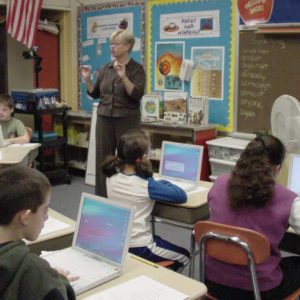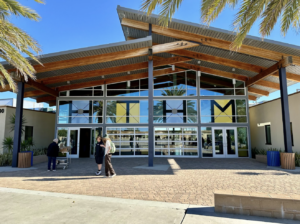Relationships Key to High Quality Online Instruction
 Last week we explored the importance of quality content but it is teachers that bring it to life. This week, Digital Learning Now released a video summary of Element #6, high quality instruction.
Last week we explored the importance of quality content but it is teachers that bring it to life. This week, Digital Learning Now released a video summary of Element #6, high quality instruction.
Students taking online courses often report a strong and significant connection with their teachers, receiving uninterrupted instructional time and feedback often at a deeper level than may occur in a traditional classroom. Mike Feuling, a founding teacher of Washington State’s Internet Academy, has been teaching online for 14 years confirms the personalized and responsive attention that students receive online. “The online environment allows me the opportunity to connect to my students one-on-one using the rich multi-media resources available, not only to build strength in course content, but to also develop a significant learning relationship that takes the student beyond the boundaries of the classroom walls.”
“With that unique relationship we create online, together we experience the ups and downs of discovering the student’s greater potential. It’s a win-win situation.”
Some digital content and platforms are becoming robust enough that it helps great teachers extend their impact over a larger number of students and occasionally across multiple sites. AdvancePath* students use mostly Apex courseware and do a lot of their work independently under the guidance of two expert teachers.
Schools that blend digital content with onsite learning often leverage teacher talent with teams supported by assistants. Vista volunteers staff the Learning Lab at Rocketship and lab assistants support students in the Carpe Diem Learning Center.
The combination of great teachers and great content makes it possible to offer every student in America every AP course, every advanced STEM course, and every foreign language—and do it with consistent quality for less than today’s limited offering cost.
The combination of great teachers and a great platform makes it possible for students anywhere to benefit from effective speech therapy offered by Presence Learning and Connections Learning—a great example of a distributed workforce strategy that will become more common in hard to staff subjects/services.
For little or no investment, states can expand access to great teachers by
- allowing alternative routes to certification
- providing reciprocity for teachers from other states (33 states do)
- allowing multi-location instruction (29 states do)
- requiring training before teaching an online or blended course (7 states do)
There is no reason a retired engineer with the training and support of an approved provider should not be able to teach AP Physics. And, there is no reason that a great physics teacher should be limited to teaching students only in her district or state.
Digital learning is making it more likely that every student will be connected to great teachers and powerful learning experiences.
For more see Online partnerships for elementary success








0 Comments
Leave a Comment
Your email address will not be published. All fields are required.